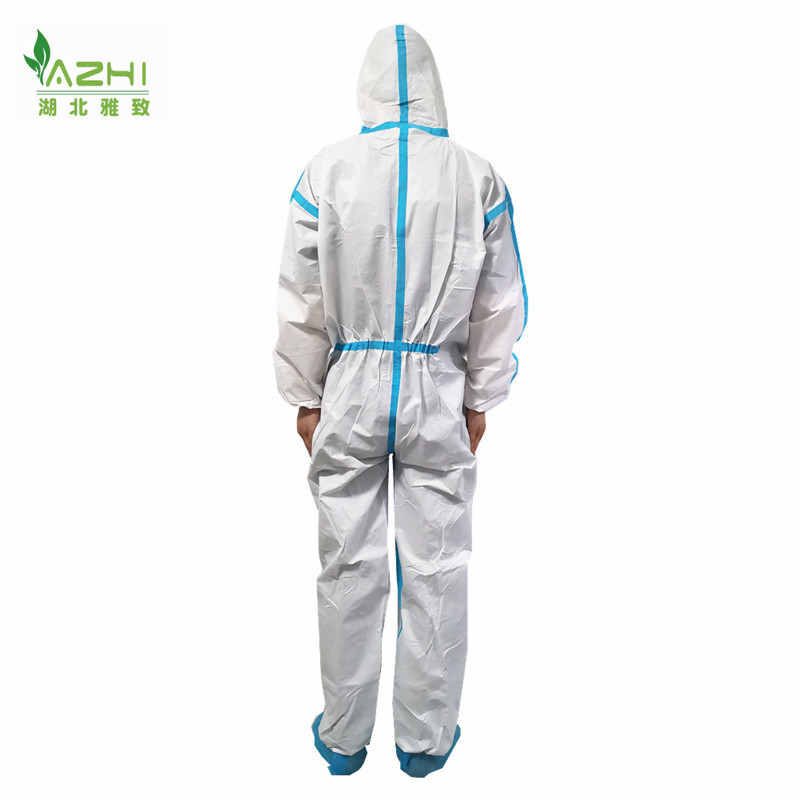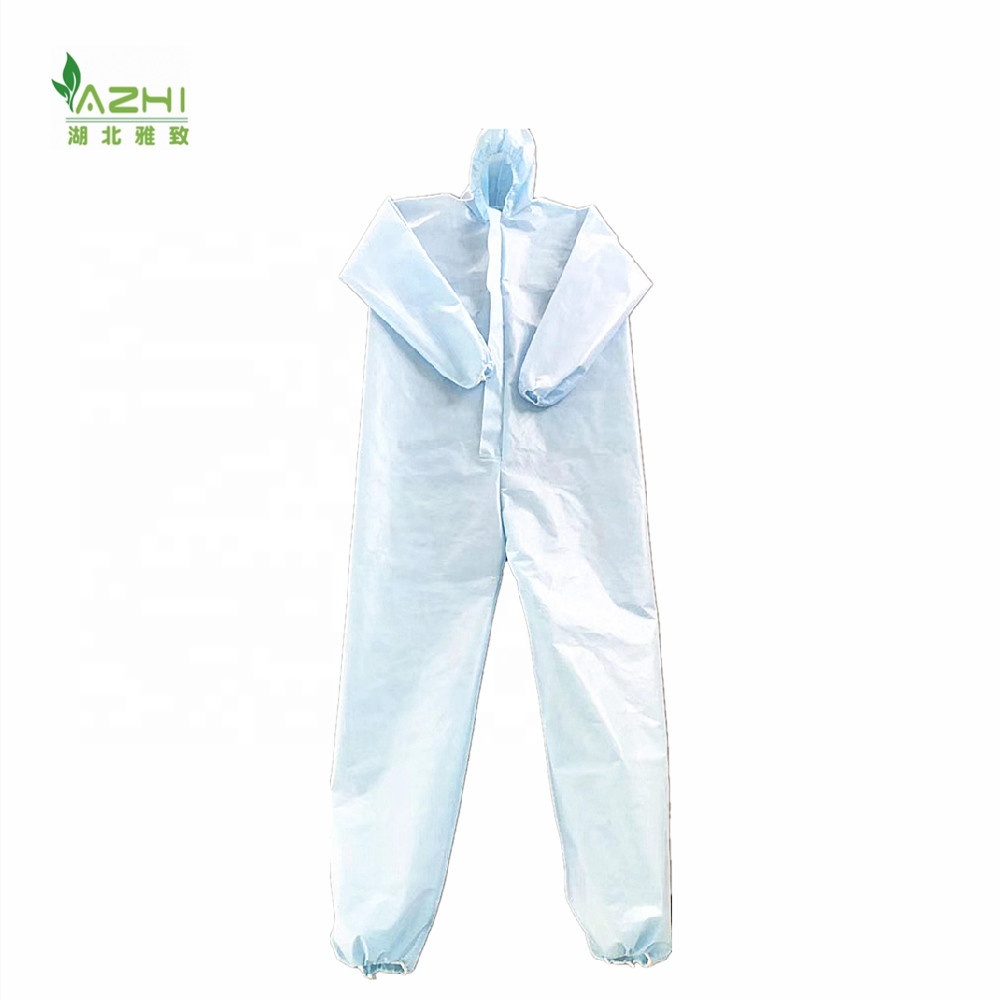News
The Environmental Considerations of Disposable Protective Clothing: A Comprehensive Analysis
Oct 16,2025
The Environmental Considerations of Disposable Protective Clothing
Introduction to Disposable Protective Clothing
In recent years, the demand for disposable protective clothing has surged, particularly in sectors like healthcare, food service, and industrial manufacturing. While these garments provide essential safety and hygiene, they also raise significant environmental concerns. Understanding the implications of disposable protective clothing is crucial for professionals in the industry, environmental advocates, and consumers alike.
Understanding Disposable Protective Clothing
What is Disposable Protective Clothing?
Disposable protective clothing refers to garments designed for single-use applications. They are typically made from materials such as polyethylene, polypropylene, or coated fabrics that offer barrier protection against contaminants, pathogens, and hazardous substances. Common types include gowns, coveralls, gloves, and masks.
Why Choose Disposable Protective Clothing?
The primary reasons for using disposable clothing include:
1. **Infection Control**: In medical settings, disposables minimize the risk of cross-contamination.
2. **Convenience**: They eliminate the need for laundering and maintenance.
3. **Cost-Effectiveness**: For some organizations, the convenience outweighs potential waste disposal costs.
However, these benefits come at an environmental cost that must be considered.
The Environmental Impact of Disposable Protective Clothing
Material Composition and Its Implications
Most disposable protective clothing is made from synthetic materials that are not biodegradable. The production of these materials involves significant energy consumption, contributing to greenhouse gas emissions. Furthermore, the disposal of these garments, often through landfilling or incineration, exacerbates environmental issues:
- **Landfill Waste**: Millions of tons of non-biodegradable waste enter landfills annually, contributing to soil and water contamination.
- **Incineration Emissions**: Burning these materials can release harmful gases, including dioxins and furans, which are detrimental to air quality and public health.
The Carbon Footprint of Disposable Protective Clothing
The carbon footprint associated with disposable protective clothing involves various phases, from raw material extraction to manufacturing, distribution, and disposal. A comprehensive life-cycle assessment (LCA) reveals that each stage significantly contributes to overall emissions.
- **Manufacturing**: The energy required to produce synthetic fibers involves fossil fuel consumption.
- **Transportation**: Distribution logistics add to the carbon footprint, especially in global supply chains.
- **End-of-Life Management**: The methods of disposal affect carbon emissions, with landfills and incineration being less sustainable options.
Regulatory Landscape and Sustainability Initiatives
Current Regulations Impacting Disposable Protective Clothing
Globally, regulations surrounding disposable protective clothing vary significantly. In some regions, stringent guidelines mandate the use of eco-friendly materials. For instance, the European Union has implemented regulations to reduce plastic waste, urging manufacturers to explore sustainable alternatives.
Emerging Sustainable Alternatives
As the demand for environmentally friendly solutions grows, several innovative alternatives are emerging:
1. **Biodegradable Fabrics**: New materials made from natural fibers or biodegradable polymers are gaining traction, offering the same protective qualities with less environmental impact.
2. **Reusable Options**: In some applications, reusable protective clothing has become a viable option, especially when laundering systems are in place to ensure proper hygiene and safety standards.
3. **Circular Economy Models**: Some companies are adopting circular economy principles, focusing on recycling and reusing materials to minimize waste.
Consumer Awareness and Responsibility
The Role of Consumers in Sustainable Practices
Consumer awareness plays a pivotal role in driving change. By choosing products from manufacturers that prioritize sustainability, consumers can influence industry practices.
- **Research**: Understanding product origins and material sources is vital.
- **Eco-labels**: Choosing products with recognized eco-certifications can guide responsible decisions.
Implementing Sustainable Practices in Organizations
For organizations, integrating sustainable practices into their procurement processes can create significant positive change. This may involve:
- **Supplier Audits**: Regularly assessing suppliers for their environmental practices.
- **Employee Training**: Educating staff on the importance of sustainability in procurement and waste management.
- **Sustainability Goals**: Establishing measurable goals related to the use of sustainable materials.
Future Trends in Disposable Protective Clothing
Technological Innovations
The future of disposable protective clothing is poised for transformation through technological advancements. Innovations in fabric technology could lead to more sustainable, effective materials that are both protective and environmentally friendly.
Global Collaboration for Sustainability
International collaboration is essential in the movement towards sustainable disposable protective clothing. Initiatives that bring together manufacturers, healthcare professionals, and environmental organizations can foster innovation and create best practices.
Conclusion
The environmental considerations surrounding disposable protective clothing are multifaceted and increasingly important. As demand grows for these essential products, so too does the need for a concerted effort to mitigate their negative environmental impacts. By understanding the implications of material choice, embracing sustainable alternatives, and fostering consumer awareness, we can navigate the delicate balance between safety and sustainability. Together, we can advocate for an industry that prioritizes not only human health but also the health of our planet.
FAQs
1. What are the main environmental issues associated with disposable protective clothing?
The main issues include non-biodegradability, significant carbon emissions during production and disposal, and the potential for pollution in landfills and through incineration.
2. Are there sustainable alternatives to disposable protective clothing?
Yes, biodegradable fabrics and reusable protective clothing options are emerging as sustainable alternatives that offer similar protective qualities with reduced environmental impact.
3. How can consumers make responsible choices regarding disposable protective clothing?
Consumers can research products, choose eco-labeled items, and support companies that prioritize sustainable practices to make informed decisions.
4. What role do regulations play in the use of disposable protective clothing?
Regulations can mandate the use of eco-friendly materials and practices, influencing manufacturers to adopt more sustainable methods in producing disposable protective clothing.
5. How can organizations implement sustainable practices in their use of disposable protective clothing?
Organizations can conduct supplier audits, provide employee training, and set sustainability goals that prioritize the use of eco-friendly materials and responsible waste management.
Oct 16,2025
Category:
knowledge
Related Information








 Language
Language English
English Español
Español Português
Português اللغة العربية
اللغة العربية





